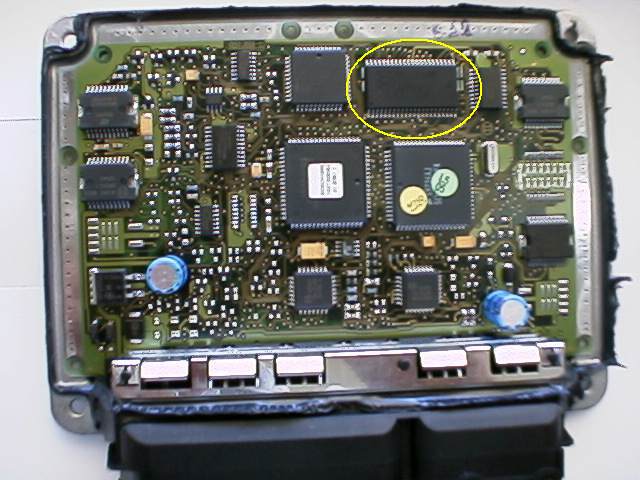OBD-II: Making Things Complicated
Since the introduction of computers into mainstream passenger vehicles in the 1980’s, the number of microprocessors in cars has grown like wildfire. High end European vehicles like the Mercedes S-Class contain as many as 100 microprocessors. These measure and control everything from accelerator pedal inputs to side-view mirror operation.
The core of the vehicle computers is known as the OBD-2 (aka OBD-II) system. The On-Board Diagnostics, 2nd generation system “speaks” a unified language that allows the car to communicate any faults to a technician. While OBD-II brought about many advancements in the car world, it also helped to gray the hairs of many shadetree and independent mechanics, not to mention dented the pocketbooks of many consumers.
The OBD-II system primarily monitors any piece of equipment on the car that is related to emissions control. It has a wide spectrum of sensors, valves, and regulators under its wing. Since emissions control is a federal mandate, the OBD-II illuminates the Check Engine Light (CEL) whenever it senses that one of its components is working incorrectly. That’s why during smog checks, the technician is required to plug in to the OBD-II system – if the CEL is on, the car automatically fails the smog check.
Reducing emissions is always a good thing, so why then is the OBD-II system such a bad thing? Well, the problem is that a CEL tells you absolutely nothing about what’s going on with your vehicle, just that it’s not working as designed. Sometimes, ignoring a CEL can lead to a thousands in repair work, and sometimes you can drive with a CEL on for thousands of miles with no adverse affects.
For the owner to know what’s wrong with the vehicle, they need a OBD-II scanner, which will provide a universal code that does tell you something. For example, P0420 is a code that all OBD-II’s can “throw,” and it will cause a CEL. The code reports that the vehicle’s catalytic converters are operating inefficiently, and most likely need to be replaced. Great, so what’s the problem, then?
The first issue is that the codes can be rather generic. For example, emission laws require that the fuel tank on new vehicles remain vapor-tight. Sealing something vapor-tight is extremely challenging when the liquid level inside the tank varies. There are a bevy of valves and regulators that control pressure and gasoline vapor in the gas tank. However, when the computer detects leakage, it throws a code of P0442, which indicates there is a leak. Which one of the 6 valves is leaking? Or is it a loose gas cap?
Determining which valve it is requires a more specialized system than a simple code reader, which is the next issue. Troubleshooting a P0442 code to find out which valve is leaking requires the technician to check each of these valves. On a simple Toyota, these valves can only be actuated by a special manufacturer computer that can cost thousands of dollars. A dealer can afford a few of these computers, but where does that leave backyard/independent mechanics? Back to the dealer, shelling out hundreds of $$$.
Third, codes can be specific but not accurate! The OBD-II on my parents Mercedes indicated that the secondary oxygen sensor was bad at 26,000 miles. No other codes were present. After replacing a $150 oxygen sensor, the code came right back! The problem was traced to a faulty Mass Air Flow (MAF) sensor, which reported incorrect values to the engine computer. The computer was injecting too much fuel for the given air intake, based on what the faulty MAF readings were telling it, resulting in the oxygen sensor reading out of range. So the OBD-II system is not bulletproof as many people think.
Finally, there are times where the OBD-II won’t show a CEL, even when something is devastatingly wrong with the vehicle. In one case, a 2005 Accord 4-cylinder had an issue where it was getting 8MPG in the city and 14MPG on the highway. There were no check engine lights, so dealers refused to diagnose an unbroken car. In the end, the $710 engine computer was replaced, and the vehicle now achieves 30+MPG. Another prevalent case? Honda transmissions would start jerking and slipping during gear changes with no fault codes. Befuddled technicians, trained to look for fault codes, believed it was internal mechanical failure and specified pricey transmission replacements. Some gearheads found a free cure by cleaning a few screens or adjusting a couple solenoids.
The moral of the story is that these complex computers can cost naive consumers and mechanics alike a lot of money. The best way to handle a check engine light is to find the code and check the internet forums for similar problems before replacing any parts. It could save a lot of time and money.


